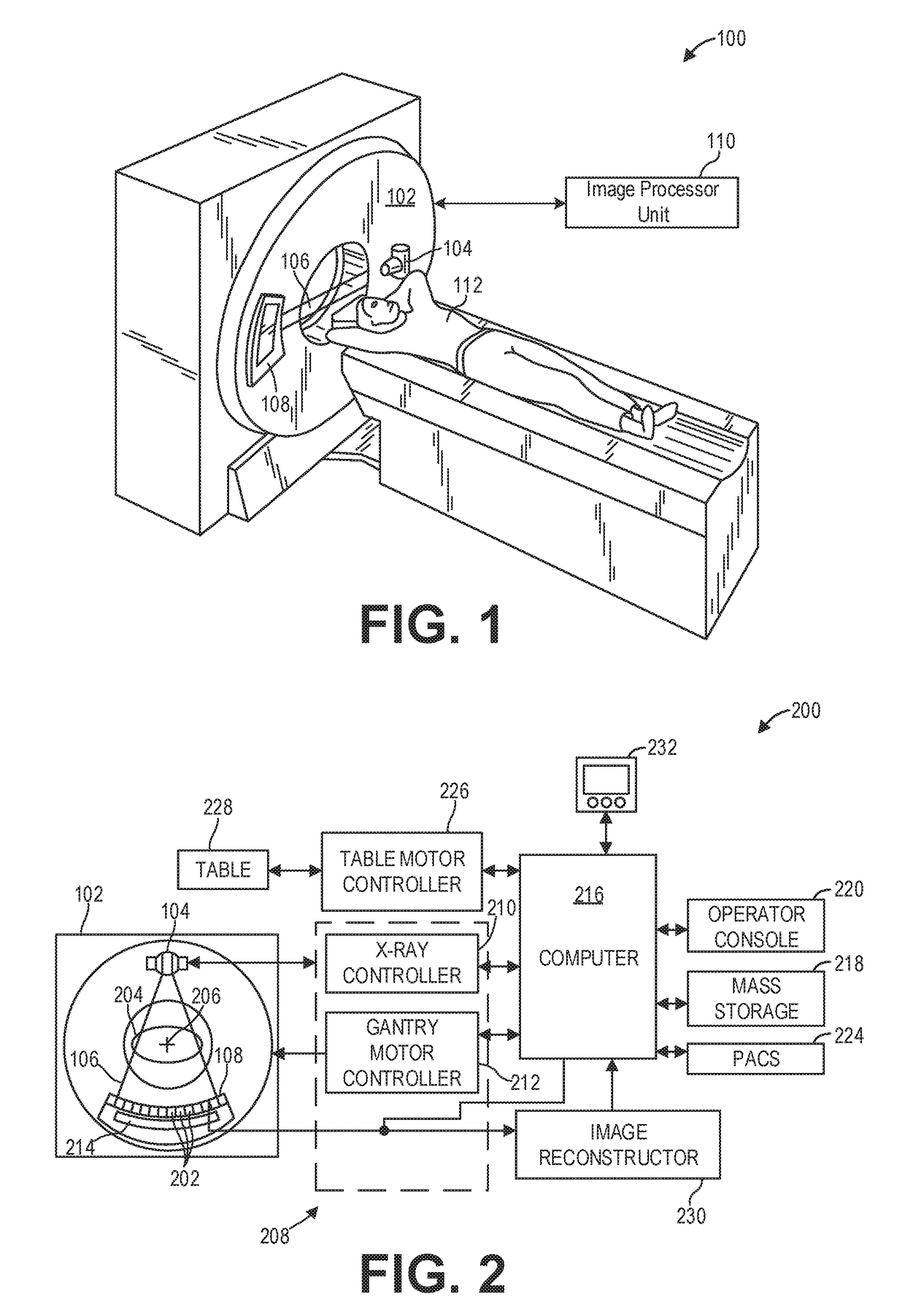Methods and systems for adaptive scan control
a technology of adaptive scanning and scanning control, applied in the field of non-invasive diagnostic imaging, can solve the problems of longer time for such exams, and achieve the effect of reducing the radiation dose delivered to the patien
- Summary
- Abstract
- Description
- Claims
- Application Information
AI Technical Summary
Benefits of technology
Problems solved by technology
Method used
Image
Examples
Embodiment Construction
[0014]The following description relates to various embodiments of medical imaging systems. In particular, methods and systems are provided for adaptively controlling a diagnostic scan by monitoring contrast enhancement. An example of a computed tomography (CT) imaging system that may be used to acquire images processed in accordance with the present techniques is provided in FIGS. 1 and 2. A method for adaptive scan control, such as the method shown in FIG. 3, may include monitoring one or more of contrast levels and heart rate of a subject during a scan and adjusting scan parameters responsive thereto. Such a method enables personalization of scan protocols on a patient-by-patient basis. Furthermore, by adapting scans based on monitored contrast levels and heart rates in real-time, multiple scan protocols may be combined into a single scan. As an example, a method, such as the method depicted in FIG. 5, includes interleaving CT angiography (CTA) and CT perfusion (CTP) scans into a ...
PUM
 Login to View More
Login to View More Abstract
Description
Claims
Application Information
 Login to View More
Login to View More - R&D
- Intellectual Property
- Life Sciences
- Materials
- Tech Scout
- Unparalleled Data Quality
- Higher Quality Content
- 60% Fewer Hallucinations
Browse by: Latest US Patents, China's latest patents, Technical Efficacy Thesaurus, Application Domain, Technology Topic, Popular Technical Reports.
© 2025 PatSnap. All rights reserved.Legal|Privacy policy|Modern Slavery Act Transparency Statement|Sitemap|About US| Contact US: help@patsnap.com



